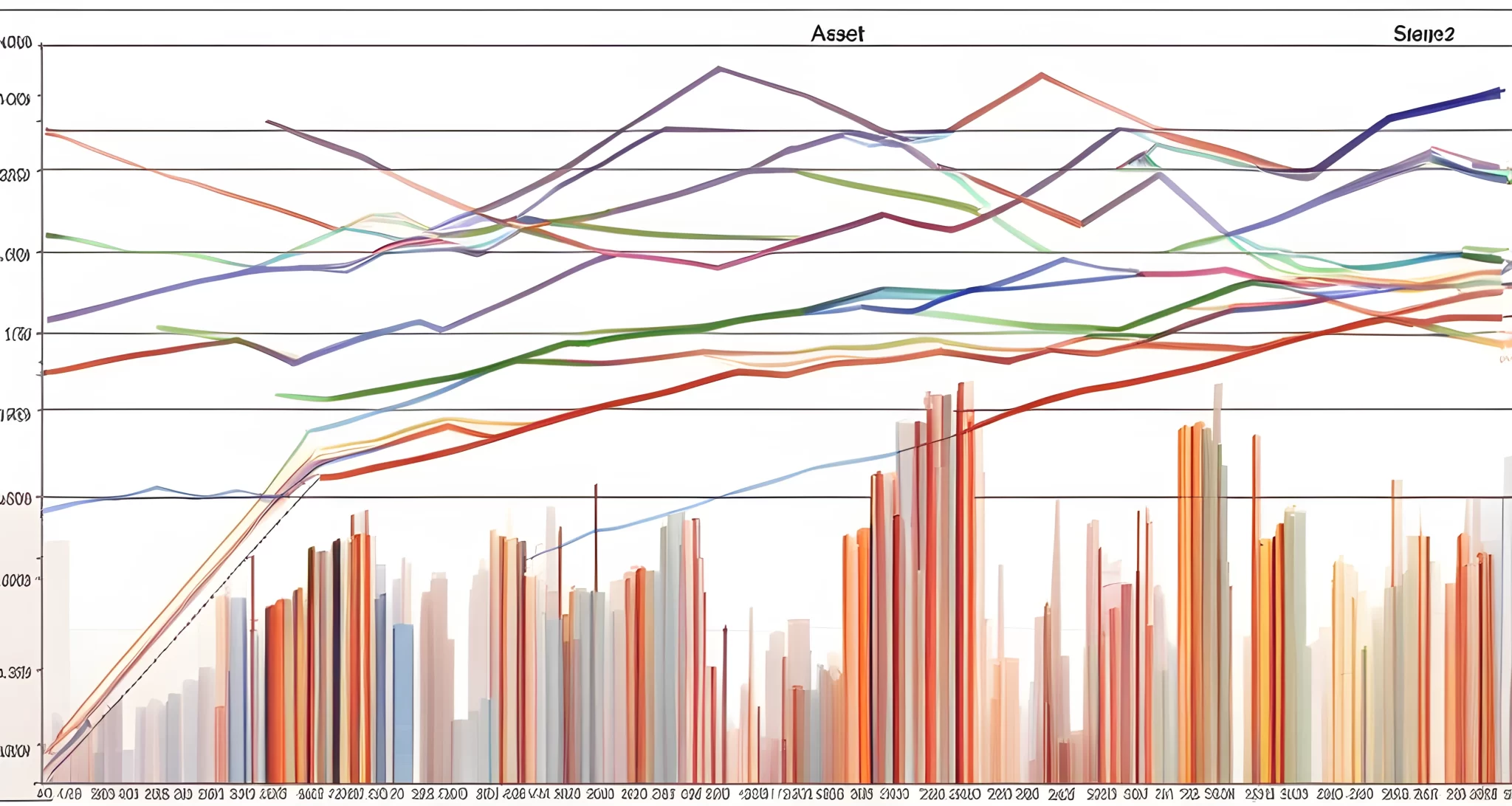Identifying Risks
Identifying risks is the first and most crucial step in effective risk management. This process involves the proactive identification of potential risks that could impact an organization’s goals and objectives. Risk identification can be accomplished through various means, including regular internal and external risk assessments. These assessments help organizations to uncover unseen risk factors and ensure compliance with various frameworks that require annual risk assessments.
Moreover, implementing tools and control processes can also aid in identifying risks. By using these tools, organizations can analyze historical data, conduct scenario analysis, and utilize risk mapping techniques to identify potential threats to their portfolio.
It is essential for organizations to recognize the importance of identifying both internal and external risks. Internal risks may include operational inefficiencies, technology failures, or human error, while external risks could involve market volatility, geopolitical events, or regulatory changes.
In the context of portfolio management, identifying risks is critical for maintaining the overall health and performance of an investment portfolio. By conducting thorough risk assessments, portfolio managers can pinpoint potential threats to their investment strategy and take appropriate measures to mitigate these risks.
It is important for organizations to stay informed about current market trends and economic developments that could pose a risk to their portfolio. By staying proactive and conducting regular risk assessments, organizations can gain valuable insights into potential threats and take necessary actions to protect their investments.
Ultimately, the process of identifying risks is fundamental in developing a comprehensive risk management strategy. By understanding potential threats and vulnerabilities, organizations can effectively prepare for future challenges and minimize the impact of unexpected events on their portfolio’s performance.
For more information on addressing risk in your investment portfolio, check out Investment risk mitigation for valuable insights into effective risk management strategies.

Assessing Risks
Assessing risks is a crucial step in the process of effective risk management. Once risks are identified, they should be carefully assessed to determine their likelihood of occurrence and the potential impact if they do occur. This process helps prioritize risks and informs decision-making within portfolio management.
Assessing risks involves analyzing the probability of each risk event and the potential consequences it could have on the overall portfolio. By understanding the likelihood and impact of each risk, portfolio managers can make informed decisions about how to mitigate or manage these risks.
As outlined in the article "Addressing Risk in Portfolio Management: Strategies and Solutions," assessing risks allows for a more comprehensive understanding of potential threats to a portfolio. It provides a clearer picture of which risks are most pressing and require immediate attention. By prioritizing risks based on their likelihood of occurrence and potential impact, portfolio managers can allocate resources effectively to address the most critical issues.
Additionally, assessing risks also involves evaluating the effectiveness of current risk management strategies in place. By examining how well existing measures mitigate or address specific risks, portfolio managers can identify areas for improvement and make necessary adjustments to enhance risk management strategies.
Furthermore, assessing risks also plays a crucial role in shaping future decision-making within portfolio management. It allows for informed choices about whether to accept, avoid, mitigate, or transfer certain risks. This proactive approach helps minimize the potential negative impacts of risk events on the overall portfolio.
In conclusion, assessing risks is an essential component of effective risk management within portfolio management. It provides valuable insights into the likelihood and potential impact of identified risks, informs decision-making, and helps prioritize resource allocation. By carefully evaluating risks, portfolio managers can develop more robust strategies to protect and enhance their portfolios.
For more information on effective risk management strategies in planning, refer to Planning for Effective Risk Management.

Responding to Risks
After assessing risks, organizations should develop and implement treatments and controls to address them effectively. This is a crucial step in the risk management process, as it enables businesses to proactively minimize the impact of potential threats. Common risk responses include:
-
Avoiding risks: This involves taking action to eliminate the possibility of a risk occurring. For example, if a company identifies a potential market downturn as a risk, they may choose to avoid it by diversifying their product line or expanding into new markets.
-
Mitigating risks: In some cases, it may not be possible to completely avoid a risk. In such instances, organizations can take steps to minimize the likelihood or impact of the risk. This could involve implementing safety protocols, conducting regular audits, or establishing emergency response plans.
-
Accepting risks: Not all risks can be avoided or mitigated, and in some cases, it may be more cost-effective to simply accept the potential consequences. However, this should be a well-informed decision based on thorough assessment and analysis.
-
Transferring risks: Sometimes it may be beneficial for an organization to transfer the risk to another party. This could involve purchasing insurance policies, outsourcing certain activities, or entering into contractual agreements that allocate risk to other entities.
By responding to risks in these ways, businesses can effectively manage potential threats and safeguard their operations. It is important for organizations to understand that risk management is an ongoing process that requires continuous monitoring and adjustment. By regularly reviewing and updating their risk responses, companies can adapt to changing circumstances and ensure that they remain resilient in the face of uncertainty.
For more information on effective risk management strategies, check out Productive Risk Avoidance Strategies.

Monitoring Risks
Monitoring Risks
Risk monitoring is a crucial part of effective portfolio management. It involves continuously tracking the execution of risk management strategies and identifying any new risks that may arise. This ongoing process enables prompt action to be taken if the likelihood, severity, or potential impact of a risk exceeds acceptable levels.
By monitoring risks, portfolio managers can stay ahead of potential issues and make informed decisions to mitigate or avoid them. This proactive approach is essential for maintaining the stability and performance of investment portfolios.
One key aspect of risk monitoring is the ability to identify new risks as they emerge. Market conditions, regulatory changes, and other external factors can all contribute to the creation of new risks that need to be addressed promptly. By staying vigilant and continually assessing the investment landscape, portfolio managers can ensure that they are prepared to respond effectively to any new challenges that may arise.
In addition, monitoring risks allows for the evaluation of the effectiveness of existing risk management strategies. By tracking the outcomes of risk responses and analyzing their impact on the portfolio, managers can identify areas for improvement and make necessary adjustments to their risk management plans.
It is important for portfolio managers to have a comprehensive understanding of risk monitoring as it directly impacts the success of their investment analysis strategies. Without effective risk monitoring, it becomes difficult to accurately measure performance and make informed decisions about future investments.
For more information on addressing risk management strategies for successful investment analysis, refer to Investment Analysis.
Overall, continuous risk monitoring is an integral part of portfolio management that enables proactive decision-making and ensures that investment portfolios remain resilient in the face of changing market conditions and emerging risks.

Importance of Effective Risk Management Strategy
Effective risk management is crucial for the success and sustainability of any business or organization. It is not enough to simply identify and assess risks; having a solid strategy in place to manage these risks is equally important.
When a business implements an effective risk management strategy, it can lead to numerous benefits across various aspects of the organization. One of the key benefits is improvements in operational effectiveness. By proactively identifying and mitigating potential risks, businesses can streamline their operations and ensure smoother day-to-day functioning.
Furthermore, a robust risk management strategy is essential for ensuring business continuity. In the face of unforeseen events or crises, having a plan in place to manage risks can help maintain essential operations and minimize disruptions.
Asset protection is another important aspect that an effective risk management strategy addresses. By identifying potential risks to assets, businesses can take steps to safeguard their resources and minimize financial losses.
Customer satisfaction is also closely linked to effective risk management. When customers know that a business has measures in place to address potential issues, they are more likely to trust and continue doing business with that organization.
Goal achievement and increased profit are two additional benefits of an effective risk management strategy. By managing risks effectively, businesses can stay on track towards their objectives and ultimately increase their bottom line.
In conclusion, having an effective risk management strategy is crucial for the overall success and resilience of a business or organization. It not only safeguards against potential threats but also paves the way for enhanced operational efficiency, customer satisfaction, and financial performance.
For more tips on efficient risk management for portfolios, check out Efficient Risk Management for Portfolios.
FAQ
What is the first step in addressing risk in portfolio management?
The first step in addressing risk in portfolio management is identifying risks. this involves proactive measures, tools, and control processes, as well as regular internal and external risk assessments to ensure compliance with various frameworks.
Why is it important to assess risks in portfolio management?
Assessing risks helps prioritize them and inform decision-making by determining their likelihood of occurrence and potential impact if they do occur.
What are the common risk responses in portfolio management?
Common risk responses include avoiding, mitigating, accepting, and transferring risks. once risks are assessed, organizations should develop and implement treatments and controls to address them effectively.
Why is monitoring risks important in portfolio management?
Risk monitoring is an ongoing process that enables prompt action if the likelihood, severity, or potential impact of a risk exceeds acceptable levels. it also involves tracking risk management execution and identifying new risks.
